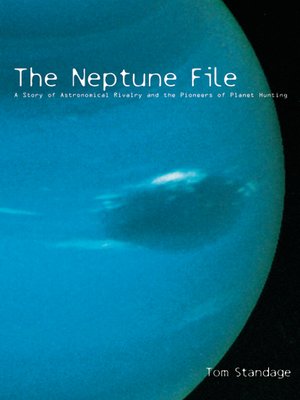
Sign up to save your library
With an OverDrive account, you can save your favorite libraries for at-a-glance information about availability. Find out more about OverDrive accounts.
Find this title in Libby, the library reading app by OverDrive.



Search for a digital library with this title
Title found at these libraries:
| Loading... |
A Story of Astronomical Rivalry and the Pioneers of Planet Hunting
The Neptune File is the first full account of the dramatic events surrounding the eighth planet’s discovery, and the story of two remarkable men who were able to “see” on paper what astronomers looking through telescopes for more than 200 years had never seen.
On June 26, 1841, John couch Adams, a brilliant young mathematician at Cambridge University, chanced upon a report by England’s Astronomer Royal, George Airy, describing unsuccessful attempts to explain the mystifying orbital behavior of the planet Uranus, discovered 65 years earlier. Adams theorized that Uranus’s orbit was being affected by the gravitational pull of another, as-yet-unseen planet. Furthermore, he believed that he did not need to see the planet to know where it was. Four years later, his daring mathematical calculations pinpointed the planet’s location, but Airy failed to act on them—a controversial lapse that would have international repercussions.
Soon after Adams’s “proof,” a rival French astronomer, Urbain Le Verrier, also calculated the planet’s position, and the race was on to actually view it. Found just where Adams and Le Verrier had predicted, the planet was named Neptune—and as the first celestial object located through calculation rather than observation, its discovery pioneered a new method for planet hunting.
Drawing on long-lost documents in George Airy’s Neptune scrapbook, which resurfaced at an observatory in Chile in 1999. The Neptune File is a tale of heroes and cranks, amateur astronomers, and knighted celebrities. And the tale continues to unfold. Though 150 years would pass before another planet was “calculated,” since the 1995 discovery of a planet circling star 51 Pegasi dozens of planets have been detected in orbit around distant stars. Yet none of them has ever been seen. Their discovery—and the history of science—owes much to the two men who dared to first place celestial calculation before observation.






